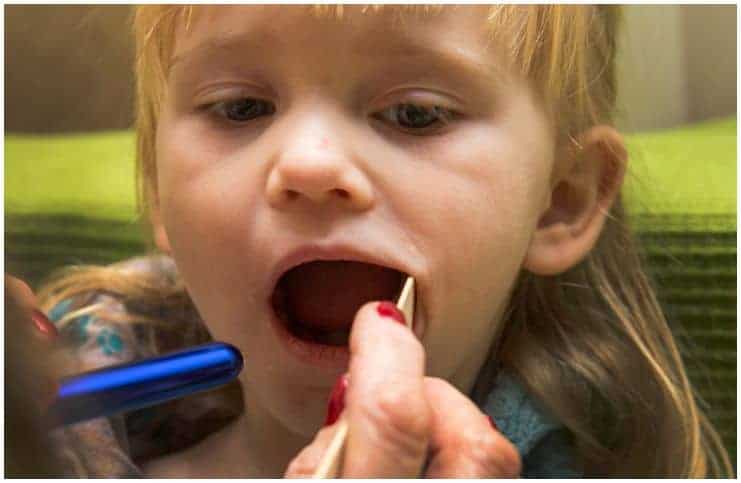Here are the top interesting facts about scarlet fever (scarlatina):
1 Scarlet fever, also called scarlatina, is a bacterial infection caused by group A Streptococcus bacteria (this bacterium also causes strep throat) that results in fever and a rash.
2 This condition can be transmitted through respiratory droplets or direct contact with saliva, mucus, or the skin of infected people. It mainly affects children between 2 and 10 years of age.
3 Scarlatina can also be caught from carriers – individuals who have Streptococcus bacteria on their skin and in their throat but do not show any signs and symptoms. According to data, 1 in 5 school-age children are thought to be asymptomatic carriers.
4 In the past, scarlatina was a serious childhood illness. Simply hearing the name of this bacterial infection, and knowing that it was present in the community, was sufficient to strike fear into the hearts of people living in Victorian-era Europe and the United States.
5 For instance, in the early 1900s through the 1930s, the number of patients with scarlatina in Wales and England frequently topped 100,000.
6 In the present day, the mortality rates associated with this once feared condition has considerably decreased, mostly because of the introduction and use of antibiotics.
7 Scientists are not entirely sure why cases of scarlatina have decreased while cases of strep throat remain at their old levels. Some consider that the Streptococcus bacteria are getting weaker since infections are becoming less prevalent worldwide.
8 There were 4,642 cases reported in Wales and England in 2013, however, this then increased to 15,625 cases in 2014.
Symptoms
#9 The rash is the most frequent symptom. It spreads to the neck, ears, inner thighs, elbows, chest, and other parts of the body. The rash usually appears approximately two days after the patient starts feeling ill, however, it can appear up to a week later or before they feel sick.
10 There are other signs and symptoms which come with the infection, including:
- a whitish coating, which can appear on the surface of the tongue.
- red face – the face may look flushed with the exception of the mouth. There may also be a pale, white area just around the mouth.
- red lines – the folds of skin around the armpits, groin, knees, elbows, and neck commonly become a deeper red than the surrounding rash.
- the back of the throat and tonsils might be covered with a whitish coating or look dotted with yellowish specks of pus.
- a fever of 38.3 degrees Celsius (101 degrees Fahrenheit) or higher is normal. In addition, chills are usually seen with the fever.
Occasionally, the symptoms are quite mild, and may only include a mild rash, a moderate temperature, and a bit of a sore throat.
11 Scarlatina commonly clears up within seven days, but the skin may peel for up to a month after the other signs and symptoms have passed.
12 When this condition occurs due to a throat infection, the fever usually subsides within four days.
13 Complications as a result of untreated scarlatina include – kidney damage and rheumatic heart disease. Other complications are:
- arthritis (joint inflammation);
- pneumonia (lung infection);
- abscesses of the throat;
- skin infections;
- otitis media (ear infections).
14 There is no evidence to suggest that having this condition during pregnancy will put the unborn baby at risk. Nevertheless, if you are pregnant, tell the midwives and healthcare professionals in charge of your care if you have been in contact with an individual who has this bacterial infection.
Causes
15 It is caused by a germ (bacterium) called streptococcus, commonly group A streptococcus. This bacterium which causes it produces a toxin that leads to red rash and fever.
16 To get scarlatina, an individual must be susceptible to the toxin produced by this bacterium. Hence, hypothetically, it can happen that two kids living in the same family may both have been in direct contact with a scarlatina patient, but only the one who is susceptible to the toxin develops it.
Treatment
17 Your healthcare professional will prescribe antibiotics. Amoxicillin and penicillin are the common antibiotics of choice for treating this type of infection.
Additionally, erythromycin or clindamycin are alternative treatments for sufferers unable to take penicillin. Antibiotics don’t cure this condition, however, they will help the patient to get better quicker.
Treatment with antibiotics is also vital to prevent serious complications, like – kidney disease or rheumatic fever.
18 Currently, antibiotic-resistant Streptococcus bacteria strains are circulating in Hong Kong.
Prevention
19 The best method to prevent this infection is to avoid direct contact with anyone who has the condition. If someone has touched an infected person, it is recommended to wash the hands thoroughly with soap and water.
Also, if someone has touched any items that the infected person recently touched (towels, clothes, bedding), then he or she should wash them immediately.
20 Children with this bacterial infection should stay home from school for at least 24 hours after starting the treatment with antibiotics.
Images source – Shutterstock
READ MORE: Interesting Facts About Tay-Sachs Disease
References http://www.nejm.org/doi/full/10.1056/NEJM194610102351501 https://www.ncbi.nlm.nih.gov/pmc/articles/PMC1655209/ https://www.ncbi.nlm.nih.gov/pmc/articles/PMC2167774/
